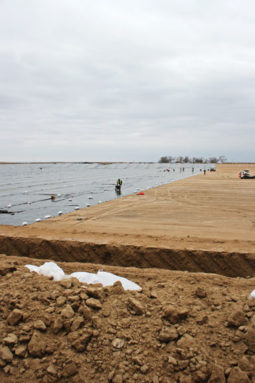The National Livestock and Poultry Environmental Learning Center (LPELC) held the first national Waste to Worth Conference in Denver, Colorado.
The goal of the April conference was to build a national network of agri-professionals addressing issues related to air, water, soil and climate.
The two-and-a-half-day event featured multiple learning tracks and brought together farmers, scientists, academia, regulators and allied industry.

Prior to the event, a full-day tour was held to provide participants with an overview of animal agriculture in northeastern Colorado while highlighting innovative manure management techniques.
Participants saw a state-of-the-art composting facility at a poultry farm, witnessed in-barn composting at a dairy, heard about manure gasification and viewed the recently re-engineered runoff collection system at a feedlot, and observed vacuum manure collection and innovative fly control at another
dairy. PD

PHOTOS
PHOTOS ONE, TWO & THREE: A new 3,200-cow dairy under construction was lining its 83-acre-foot lagoon.

PHOTO FOUR: Jason Shelton of Shelton Dairy said he prefers the farmâs compost barn built in 2010 when it comes to cow comfort but likes the freestall barn better in terms of manure handling. The 2,400-cow dairy also has cows out on drylots.
PHOTO FIVE: This poultry farm produces 850 tons of manure each week. The majority (90 percent) is dried for lawn fertilizer. The remaining 10 percent is composted and sold as a soil amendment.

PHOTO SIX: Freestall barns and outdoor lots are cleaned regularly at this dairy. The manure is composted throughout the summer to help with fly control.
PHOTO SEVEN: This beef feedlot renovated its runoff collection system to achieve a greater holding capacity. A UV treatment system also enables them to recoup 40 million gallons a year.

Karen Lee
Editor
Progressive Dairyman






